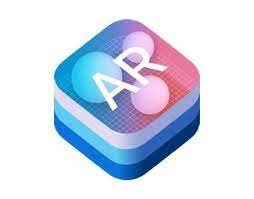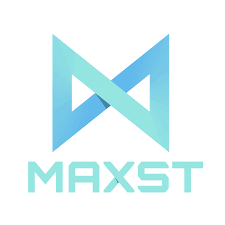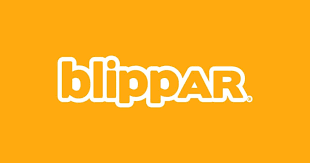Augmented reality (AR) has become an increasingly popular technology over the years, with applications ranging from gaming and entertainment to industrial and commercial use cases. With the advent of artificial intelligence (AI), the possibilities for creating immersive and engaging AR experiences have grown even further. AI can provide developers with a range of powerful tools that enable them to create AR applications that are more sophisticated, more realistic, and more interactive than ever before.
In this blog, we will take a look at some of the best AI tools for augmented reality. We will explore the features and capabilities of these tools and discuss how they can be used to create high-quality AR experiences. Whether you are a developer looking to create your first AR application or an experienced professional looking to take your AR projects to the next level, this blog will provide you with valuable insights into the best AI tools for creating immersive augmented reality experiences.
ARKit

ARKit is an AI tool developed by Apple that allows developers to create augmented reality experiences for iOS devices. With ARKit, developers can add virtual objects to the real world, create immersive 3D games, and enhance existing apps with AR features. ARKit uses a combination of device motion tracking, camera scene capture, and advanced scene processing to accurately place virtual objects in the real world, making the AR experience feel more realistic. The tool also supports face tracking, allowing developers to create AR experiences that interact with a user's facial expressions and movements.
Pros
Cons
Overall Rank
ARCore

ARCore is a cutting-edge AI tool developed by Google that allows developers to create augmented reality (AR) experiences on Android devices. With its advanced features such as motion tracking, environmental understanding, and light estimation, ARCore can seamlessly blend digital objects into the real world, making AR experiences more realistic and immersive. Furthermore, ARCore's compatibility with Unity and Unreal Engine enables developers to create complex AR experiences and deploy them on a wide range of Android devices, without having to worry about device fragmentation issues. Overall, ARCore is a game-changer in the world of AR development, offering developers a powerful tool to create high-quality AR experiences.
Pros
Cons
Overall Rank
Vuforia

Vuforia is an AI tool developed by PTC that allows developers to create augmented reality (AR) applications. It uses computer vision technology to recognize and track images and objects in the real world, allowing for the overlay of digital content on top of the physical world. With Vuforia, developers can create immersive AR experiences that blend the virtual and real world seamlessly. Vuforia offers a variety of features, including support for multiple platforms, image recognition, object recognition, and 3D model rendering. It also offers robust analytics to help developers track user engagement and optimize their applications for better performance.
Pros
Cons
Overall Rank
Wikitude

Wikitude is an AI-powered tool that allows developers to create augmented reality (AR) experiences for mobile devices. The platform offers an easy-to-use interface and comprehensive documentation to help developers integrate AR features into their apps. With Wikitude, developers can use location-based services, image recognition, and 3D object recognition to create engaging AR experiences for their users. Additionally, the platform offers features like cloud recognition, which allows developers to recognize and track images and objects in real-time, and instant tracking, which lets them create AR experiences without the need for markers or other tracking methods. With Wikitude's advanced technology and easy-to-use platform, developers can create exciting and innovative AR experiences that will captivate their audiences.
Pros
Cons
Overall Rank
EasyAR

EasyAR is a powerful AI tool that allows developers to create augmented reality (AR) applications with ease. With its user-friendly interface and robust feature set, EasyAR simplifies the process of developing AR experiences. The tool supports a wide range of platforms, including iOS, Android, and Unity, making it accessible to developers across different ecosystems. EasyAR also offers advanced tracking and image recognition capabilities, allowing developers to create AR experiences that accurately map to the real world. Additionally, EasyAR provides extensive documentation and support to help developers create high-quality AR applications quickly.
Pros
Cons
Overall Rank
Maxst

Maxst is an innovative AI tool that provides cutting-edge computer vision technology for businesses and developers. With its robust feature set, Maxst helps to create advanced AR and VR experiences, including object recognition, tracking, and 3D mapping. Its powerful platform allows for easy integration with other technologies, including mobile devices, smart glasses, and drones. Moreover, Maxst provides comprehensive support for various programming languages, such as Java, Swift, and Unity, enabling developers to quickly build AR and VR applications. Overall, Maxst is an excellent tool for businesses and developers looking to create immersive AR and VR experiences with advanced computer vision capabilities.
Pros
Cons
Overall Rank
Kudan AR

Kudan AR is an innovative tool that combines augmented reality (AR) and artificial intelligence (AI) technologies to create unique and immersive user experiences. Kudan AR allows developers to build AR applications that can recognize and track images, objects, and even people in real-time. The tool provides an easy-to-use interface that enables developers to create AR experiences without requiring extensive coding knowledge. With Kudan AR, developers can add features such as object recognition, face tracking, and markerless tracking to their AR applications, making them more interactive and engaging. Overall, Kudan AR is a powerful tool that simplifies the development of AR applications and offers endless possibilities for creative AR experiences.
Pros
Cons
Overall Rank
ARToolKit

ARToolKit is an AI tool that enables developers to create augmented reality (AR) applications with ease. It is an open-source software development kit (SDK) that uses computer vision algorithms to track the position and orientation of physical objects in real-time, and then superimpose digital images on them. This tool has a broad range of applications, from gaming and advertising to education and healthcare. Its user-friendly interface allows developers to build AR experiences that are engaging and interactive, without requiring extensive programming skills. With ARToolKit, developers can create AR applications that enhance the user experience and create immersive, interactive environments.
Pros
Cons
Overall Rank
Blippar

Blippar AI tool is a powerful augmented reality platform that allows users to create and publish AR experiences for their brand. With its cutting-edge technology, Blippar is able to recognize and augment any real-world object, making it an ideal tool for marketers, advertisers, and educators. Whether it's an interactive product demo, an engaging promotional campaign, or an immersive learning experience, Blippar can help bring it to life with its advanced computer vision and machine learning capabilities. The platform also provides a user-friendly interface, making it easy for even non-technical users to create AR content in minutes.
Pros
Cons
Overall Rank
ZapWorks

ZapWorks is an AI-powered tool that allows users to create interactive and engaging augmented reality (AR) experiences without the need for coding. This easy-to-use platform offers a range of features such as 3D modelling, image recognition, and animation to help users bring their ideas to life. With ZapWorks, users can create AR experiences for various purposes such as advertising, marketing, education, and entertainment. The tool is compatible with multiple devices, including smartphones and tablets, making it accessible to a broader audience. Overall, ZapWorks is an innovative and user-friendly tool that enables creators to make AR experiences that are both immersive and memorable.
Pros
Cons
Overall Rank
XZIMG

XZIMG is an AI tool that provides cutting-edge technology solutions to businesses and individuals. The tool offers a wide range of features, including image and video processing, facial recognition, and object detection. XZIMG is highly versatile, and it can be customized to suit the needs of various industries, from healthcare to security. One of the unique aspects of XZIMG is its ease of use, even for those without extensive technical knowledge. The tool is designed to be user-friendly, with clear instructions and intuitive interfaces. Additionally, XZIMG offers excellent customer support, ensuring that users can always access the help they need. Overall, XZIMG is a powerful AI tool that can help businesses and individuals streamline their operations and improve their results.
Pros
Cons
Overall Rank
Catchoom

Catchoom is an AI tool that offers visual search and recognition capabilities for businesses of all sizes. With Catchoom, companies can leverage cutting-edge machine learning technology to enable customers to easily search for products based on images they have taken or uploaded. This advanced technology can analyze images in real-time, allowing for seamless integration into any company's existing workflows. In addition to visual search capabilities, Catchoom also offers barcode scanning and object recognition, making it a versatile solution for businesses in a variety of industries. By utilizing Catchoom, companies can improve customer experiences and drive revenue growth through increased conversion rates and customer satisfaction.
Pros
Cons
Overall Rank
ARmedia

ARmedia is an innovative AI tool that allows users to create augmented reality (AR) content without any coding or 3D modeling skills. With its user-friendly interface, ARmedia enables users to design and customize AR experiences with ease. The tool offers a wide range of features such as markerless tracking, 3D object animation, and image recognition, which makes it an ideal choice for businesses and individuals looking to create engaging and interactive AR content. ARmedia also offers a cloud-based solution, which means that users can access their projects from anywhere and collaborate with team members in real-time. Overall, ARmedia is a powerful and intuitive tool that simplifies the AR creation process and enables users to bring their ideas to life.
Pros
Cons
Overall Rank
Re'Flekt

Re'Flekt is an augmented reality (AR) platform that enables businesses to create and deliver interactive training and maintenance support content for their employees and customers. The tool provides an intuitive drag-and-drop interface, which allows even non-technical users to create AR content easily. Re'Flekt uses image recognition technology to identify real-world objects and overlay digital content on top of them, making it easy for users to interact with the AR content. This tool has been utilized in various industries such as automotive, aerospace, and healthcare, providing employees with immersive and interactive training content, reducing errors and improving overall performance.
Pros
Cons
Overall Rank
Scope AR

Scope AR is an augmented reality (AR) tool that uses artificial intelligence (AI) to provide remote assistance, training, and guidance to workers in various industries. This technology allows workers to see step-by-step instructions overlaid on top of real-world objects, improving efficiency, reducing errors, and increasing safety. With Scope AR, remote experts can guide workers in real-time, providing detailed instructions and troubleshooting support from anywhere in the world. This tool is particularly useful for industries that involve complex machinery, hazardous materials, or remote work environments, such as aerospace, manufacturing, and construction.
Pros
Cons
Overall Rank
Unity3D AR

Unity3D AR AI tool is a powerful software development kit that allows developers to create immersive augmented reality (AR) experiences. It comes equipped with advanced AI tools that can be used to create intelligent virtual characters, NPCs, and other interactive elements that can respond to user inputs and make the AR experience more engaging. With Unity3D AR AI tool, developers can create complex AR scenarios with ease, such as virtual try-ons for fashion or interactive educational simulations. The tool also supports various AR platforms, including Apple ARKit and Google ARCore, making it versatile and accessible to a wide range of users.
Pros
Cons
Overall Rank
In conclusion, AI tools have revolutionized the field of augmented reality (AR), providing developers with powerful technologies that allow them to create immersive and engaging AR experiences. Through advanced algorithms, machine learning models, and computer vision techniques, AI has enabled the development of AR applications that can recognize and track objects in real-time, analyze images, and even generate 3D models from 2D images. Some of the best AI tools for augmented reality include Vuforia, ARKit, ARCore, and Unity. These tools provide developers with the ability to create high-quality AR experiences that can be deployed across a range of devices and platforms, from smartphones and tablets to smart glasses and headsets. They offer features such as image recognition, 3D modeling, and object tracking, and can be used to create everything from simple AR games to complex industrial applications. As AI and AR continue to evolve, we can expect to see even more powerful tools and technologies emerging in the years to come. From improved image recognition and tracking to more advanced machine learning models, the possibilities are endless. With the right AI tools, developers can unlock the full potential of augmented reality and create truly immersive and engaging experiences that push the boundaries of what's possible.
